
Bernard Ralph Maybeck was an American architect in the Arts and Crafts Movement of the early 20th century. He worked primarily in the San Francisco Bay Area, designing public buildings, including the Palace of Fine Arts in San Francisco, and also private houses, especially in Berkeley, where he lived and taught at the University of California. A number of his works are listed on the National Register of Historic Places.
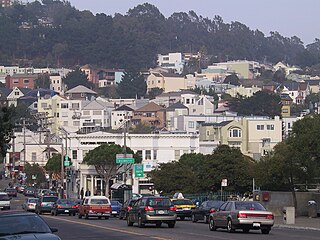
Glen Park is a residential neighborhood in San Francisco, California, located south of Twin Peaks and adjacent to Glen Canyon Park.
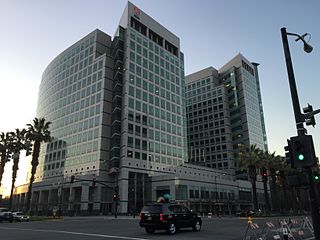
Downtown San Jose is the central business district of San Jose, California, United States. Downtown is one of the largest tech clusters in Silicon Valley, as well as the cultural and political center of San Jose.
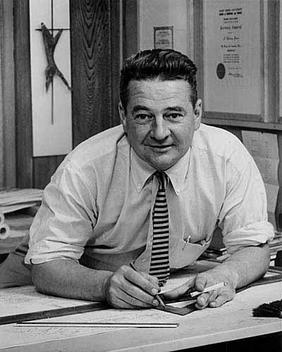
Archibald Quincy Jones was a Los Angeles–based architect and educator known for innovative buildings in the modernist style and for urban planning that pioneered the use of greenbelts and green design.

Joseph Leopold Eichler was a 20th-century post-war American real estate developer known for developing distinctive residential subdivisions of mid-century modern style tract housing in California. He was one of the influential advocates of bringing modern architecture from custom residences and large corporate buildings to general public availability. His company and developments remain in the Greater San Francisco Bay Area and Greater Los Angeles.

Palm Haven is a historic residence park and neighborhood in the Willow Glen district of San Jose, California.
The San José Public Library is the public library system of San Jose, California, made up of 23 branch libraries spread across the city.
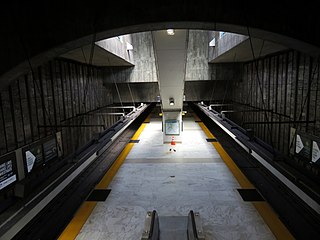
Glen Park station is an underground Bay Area Rapid Transit (BART) station located in the Glen Park neighborhood of San Francisco, California. The station is adjacent to San Jose Avenue and Interstate 280. The station is served by the Red, Yellow, Green, and Blue lines.

The J. J. Walser Jr. residence in the Chicago, United States, neighborhood of Austin was designed by Frank Lloyd Wright for real estate developer Joseph Jacob Walser Jr. The cruciform two-story house is typical of Wright's Prairie School period.

Holmes Run Acres is a community of 355 houses in Fairfax County, Virginia, in the Washington, D.C. suburbs. Nearly all of the neighborhood is within the Holmes Run Acres Historic District, listed on the National Register of Historic Places.

Fairlawn is a working class and middle class residential neighborhood in southeast Washington, D.C., United States. It is bounded by Interstate 295, Pennsylvania Avenue SE, Minnesota Avenue SE, Naylor Road SE, and Good Hope Road SE.

Willow Glen is a district of San Jose, California, in Santa Clara County. Willow Glen is known for its historic downtown, dining and shopping, and is one of the most expensive neighborhoods to live in San Jose. Willow Glen was originally an independent town, until it voted to be annexed by San Jose in 1936.
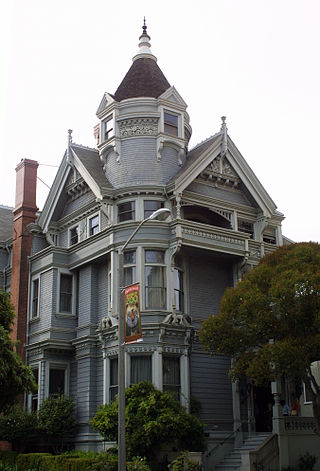
The Haas–Lilienthal House is a historic building located at 2007 Franklin Street in San Francisco, California, United States, within the Pacific Heights neighborhood. Built in 1886 for William and Bertha Haas, it survived the 1906 San Francisco earthquake and subsequent fire. The Victorian era house is a San Francisco Designated Landmark and is listed on the U.S. National Register of Historic Places. It was converted into a museum with period furniture and artifacts, which as of 2016 received over 6,500 visitors annually.
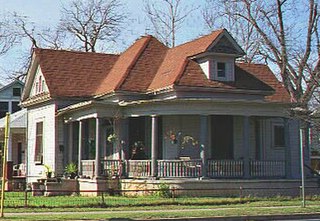
The Willow–Spence Streets Historic District is a neighborhood that lies east of downtown Austin, Texas. Its houses, churches, and commercial buildings were built in the early twentieth century. It is bounded roughly by Interstate 35 to the west, East César Chávez Street to the north, and Spence Street to the south. It extends a few houses east of San Marcos Street along Willow and Canterbury Streets. It thus includes portions of Willow, Spence, Canterbury, San Marcos, and Waller Streets. It was added to the National Register of Historic Places in 1985.
Anshen and Allen was an international architecture, planning and design firm headquartered in San Francisco with offices in Boston, Columbus, and London. The firm was ranked eighth for sustainable practices, and nineteenth overall in the "Architect 50" published by Architect magazine in 2010. They also ranked twenty-eighth in the top "100 Giants" of Interior Design 2010.

Green Gables is a 1950s subdivision located in Palo Alto, California, United States. The subdivision was developed by Joseph Eichler, whose company built its first 63 homes in 1950. Eichler hired the architecture firm Anshen & Allen to design the one-story modernist houses. The houses in Green Gables represent Eichler's efforts to apply modernist principles to affordable single-family houses, which was considered a bold development strategy at the time. Contemporary critics acclaimed Eichler's work on Green Gables; Architectural Forum awarded it "Subdivision of the Year" in 1950 along with four of Eichler's other developments, and House Beautiful devoted a feature to the subdivision.

The Three Creeks Trail is a 0.9-mile (1.4 km) pedestrian and bicycle trail that runs through the Willow Glen neighborhood in San Jose, California, from Los Gatos Creek by Lonus Street to the Guadalupe River. It directly connects to the northern segment of the Los Gatos Creek Trail and indirectly connects to several other trails.

Frank Delos Wolfe was an American architect who played a significant role in shaping the architectural landscape of now-historic neighborhoods in the Santa Clara Valley. He also designed schools, hospital, and apartments.
John Calder Mackay was an American post-war real estate developer, best known for his modernist tract homes built by the company he co-founded, Mackay Homes. He also served on the board of directors for the Children's Health Council and was one of the founders of the Palo Alto Medical Foundation.
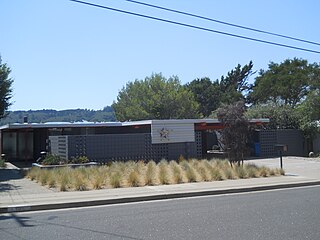
The X-100 is an experimental steel house designed by A. Quincy Jones with his partner Frederick Emmons for Eichler Homes and built in 1956 at the San Mateo Highlands development in California. It was listed on the National Register of Historic Places in 2016.




















